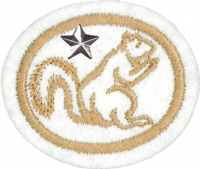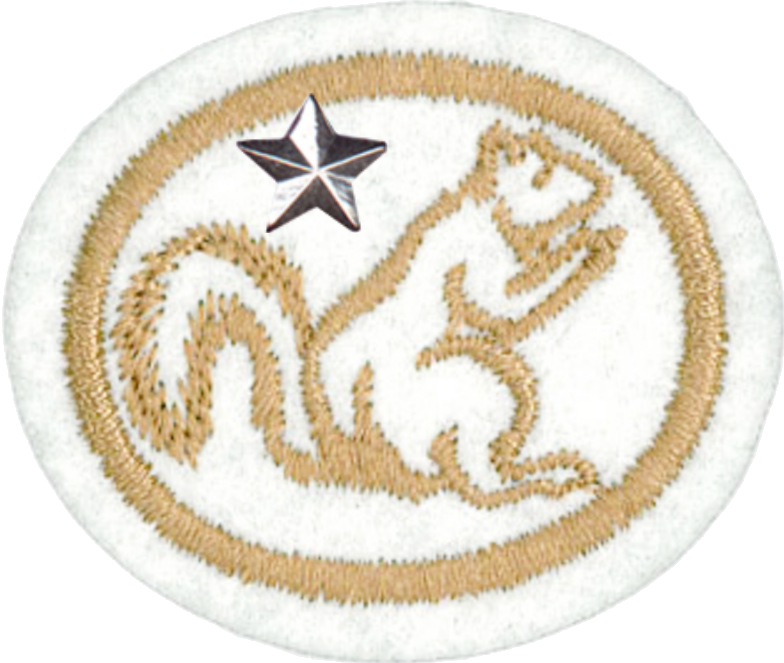Difference between revisions of "AY Honors/Mammals - Advanced/Answer Key/pt-br"
From Pathfinder Wiki
< AY Honors | Mammals - AdvancedAY Honors/Mammals - Advanced/Answer Key/pt-br
(Created page with "</noinclude> <!-- 1. Ter a especialidade de Mamíferos. --> {{honor_prerequisite|displayname=Mamíferos|honor=Mammals}}") |
(Updating to match new version of source page) |
||
| (4 intermediate revisions by 2 users not shown) | |||
| Line 1: | Line 1: | ||
{{HonorSubpage}} | {{HonorSubpage}} | ||
| − | <section begin="Body" /> | + | <section begin="Body" /> |
{{ansreq|page={{#titleparts:{{PAGENAME}}|2|1}}|num=1}} | {{ansreq|page={{#titleparts:{{PAGENAME}}|2|1}}|num=1}} | ||
<noinclude></noinclude> | <noinclude></noinclude> | ||
| Line 9: | Line 9: | ||
{{CloseReq}} <!-- 1 --> | {{CloseReq}} <!-- 1 --> | ||
{{ansreq|page={{#titleparts:{{PAGENAME}}|2|1}}|num=2}} | {{ansreq|page={{#titleparts:{{PAGENAME}}|2|1}}|num=2}} | ||
| − | <noinclude> | + | <noinclude></noinclude> |
| − | </noinclude> | + | <!-- 2. Que mamíferos de sua região são protegidos por lei? Por quê? --> |
| − | <!-- 2. | ||
| − | |||
| − | |||
{{clear}} | {{clear}} | ||
| Line 22: | Line 19: | ||
{{CloseReq}} <!-- 2 --> | {{CloseReq}} <!-- 2 --> | ||
{{ansreq|page={{#titleparts:{{PAGENAME}}|2|1}}|num=3}} | {{ansreq|page={{#titleparts:{{PAGENAME}}|2|1}}|num=3}} | ||
| − | <noinclude> | + | <noinclude></noinclude> |
| − | </noinclude> | + | <!-- 3. Como o processo de nascimento e cuidado dos filhotes difere os monotremos e marsupiais de todas as outras ordens de mamíferos? --> |
| − | <!-- 3. | ||
| − | |||
| − | |||
| − | |||
| − | |||
| − | |||
| − | |||
| − | |||
<noinclude></noinclude> | <noinclude></noinclude> | ||
{{CloseReq}} <!-- 3 --> | {{CloseReq}} <!-- 3 --> | ||
{{ansreq|page={{#titleparts:{{PAGENAME}}|2|1}}|num=4}} | {{ansreq|page={{#titleparts:{{PAGENAME}}|2|1}}|num=4}} | ||
| − | <noinclude> | + | <noinclude></noinclude> |
| − | </noinclude> | + | <!-- 4. Mencione cinco maneiras diferentes pelas quais os mamíferos protegem a si mesmos e aos seus filhotes e dar um exemplo de cada uma. --> |
| − | <!-- 4. | ||
| − | |||
| − | |||
| − | |||
| − | |||
| − | |||
| − | |||
| − | |||
<noinclude></noinclude> | <noinclude></noinclude> | ||
{{CloseReq}} <!-- 4 --> | {{CloseReq}} <!-- 4 --> | ||
{{ansreq|page={{#titleparts:{{PAGENAME}}|2|1}}|num=5}} | {{ansreq|page={{#titleparts:{{PAGENAME}}|2|1}}|num=5}} | ||
| − | <noinclude> | + | <noinclude></noinclude> |
| − | </noinclude> | + | <!-- 5. Conheça as seguintes zoonoses: febre maculosa, leishmaniose tegumentar americana, leptospirose, hantavirose, raiva, toxoplasmose e doença de Chagas. --> |
| − | <!-- 5. | ||
| − | |||
| − | |||
| − | |||
| − | |||
| − | |||
<noinclude></noinclude> | <noinclude></noinclude> | ||
{{CloseReq}} <!-- 5 --> | {{CloseReq}} <!-- 5 --> | ||
{{ansreq|page={{#titleparts:{{PAGENAME}}|2|1}}|num=6}} | {{ansreq|page={{#titleparts:{{PAGENAME}}|2|1}}|num=6}} | ||
| − | <noinclude> | + | <noinclude></noinclude> |
| − | </noinclude> | + | <!-- 6. Relacione 1 5 espécies de mamíferos silvestres que você já observou e identificou pessoalmente na natureza. Para cada um dos relacionados, incluir: --> |
| − | <!-- 6. | ||
| − | |||
| − | |||
{{clear}} | {{clear}} | ||
| Line 82: | Line 54: | ||
[[Category:Adventist Youth Honors Answer Book/pt-br]] | [[Category:Adventist Youth Honors Answer Book/pt-br]] | ||
<noinclude></noinclude> | <noinclude></noinclude> | ||
| + | |||
| + | [[Category:Adventist Youth Honors Answer Book/Do at home{{GetLangSuffix}}]] | ||
{{CloseHonorPage}} | {{CloseHonorPage}} | ||
Latest revision as of 02:34, 4 January 2023
Mamíferos - Avançado
Nível de Habilidade
2
Ano
1949
Version
02.12.2025
Autoridade de Aprovação
Conferência Geral
1
Ter a especialidade de Mamíferos.
Para obter dicas e instruções, veja: Mamíferos.
2
Que mamíferos de sua região são protegidos por lei? Por quê?
3
Como o processo de nascimento e cuidado dos filhotes difere os monotremos e marsupiais de todas as outras ordens de mamíferos?
4
Mencione cinco maneiras diferentes pelas quais os mamíferos protegem a si mesmos e aos seus filhotes e dar um exemplo de cada uma.
5
Conheça as seguintes zoonoses: febre maculosa, leishmaniose tegumentar americana, leptospirose, hantavirose, raiva, toxoplasmose e doença de Chagas.
6
Relacione 15 espécies de mamíferos silvestres que você já observou e identificou pessoalmente na natureza. Para cada um dos relacionados, incluir:
- a. Nome
- b. Data da observação
- c. Local
- d. Habitat
- e. Hora do dia
- f. Comportamento


